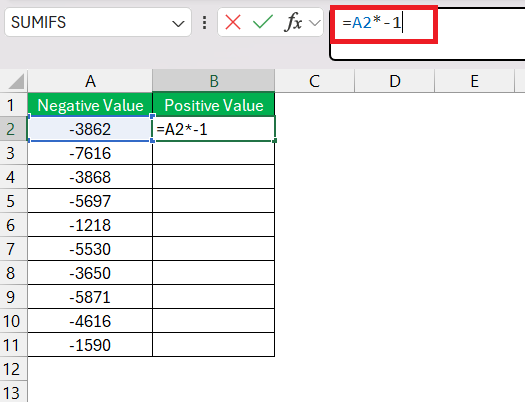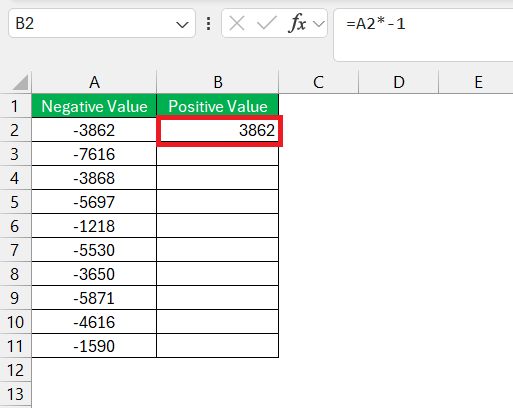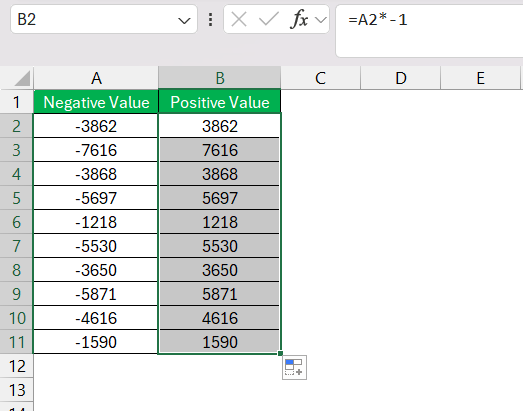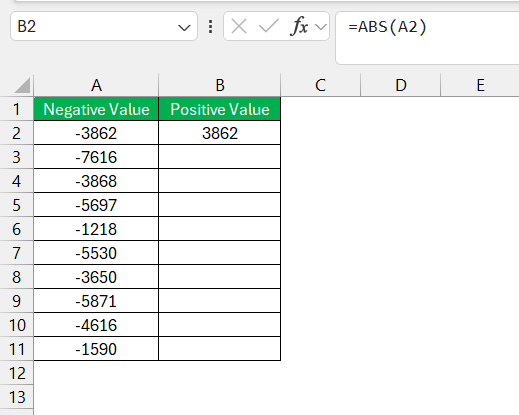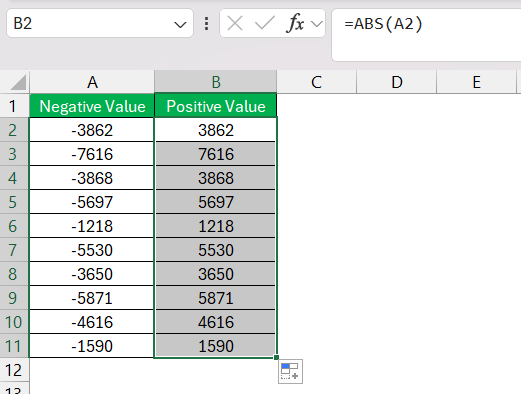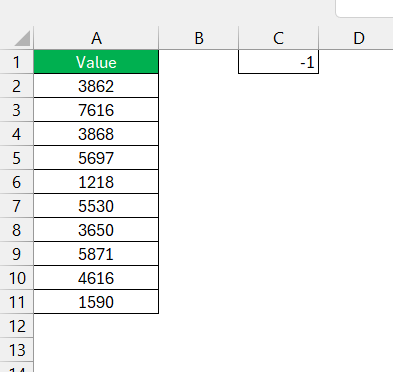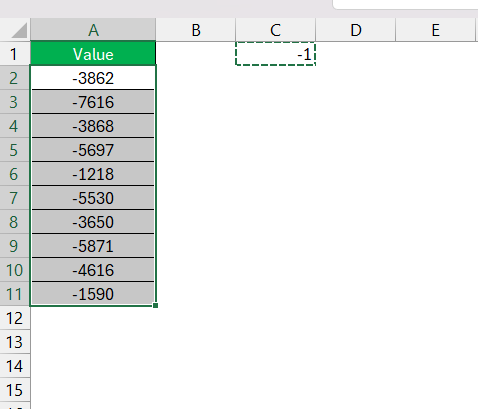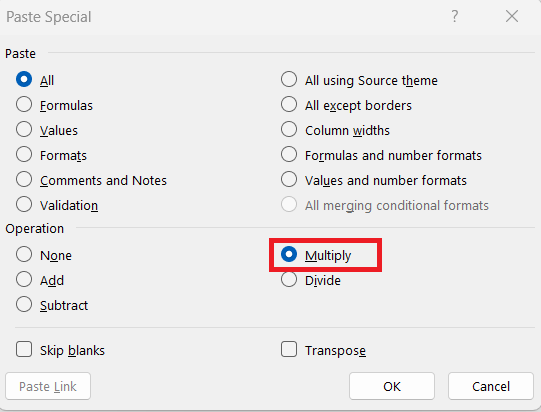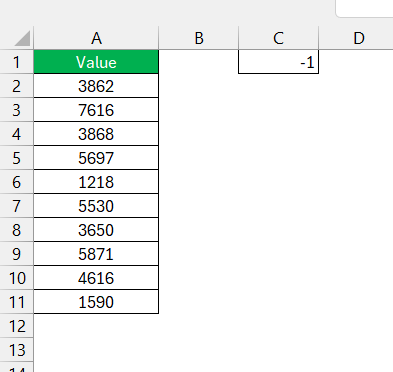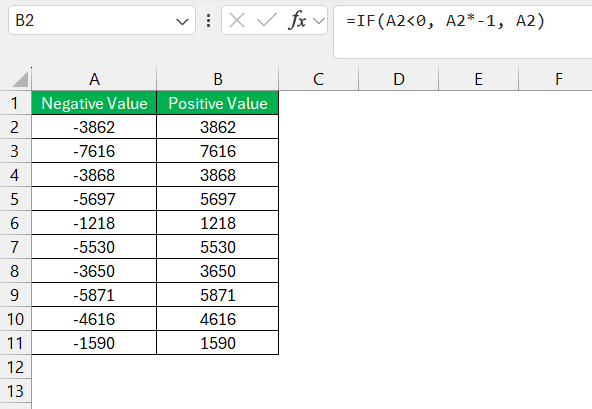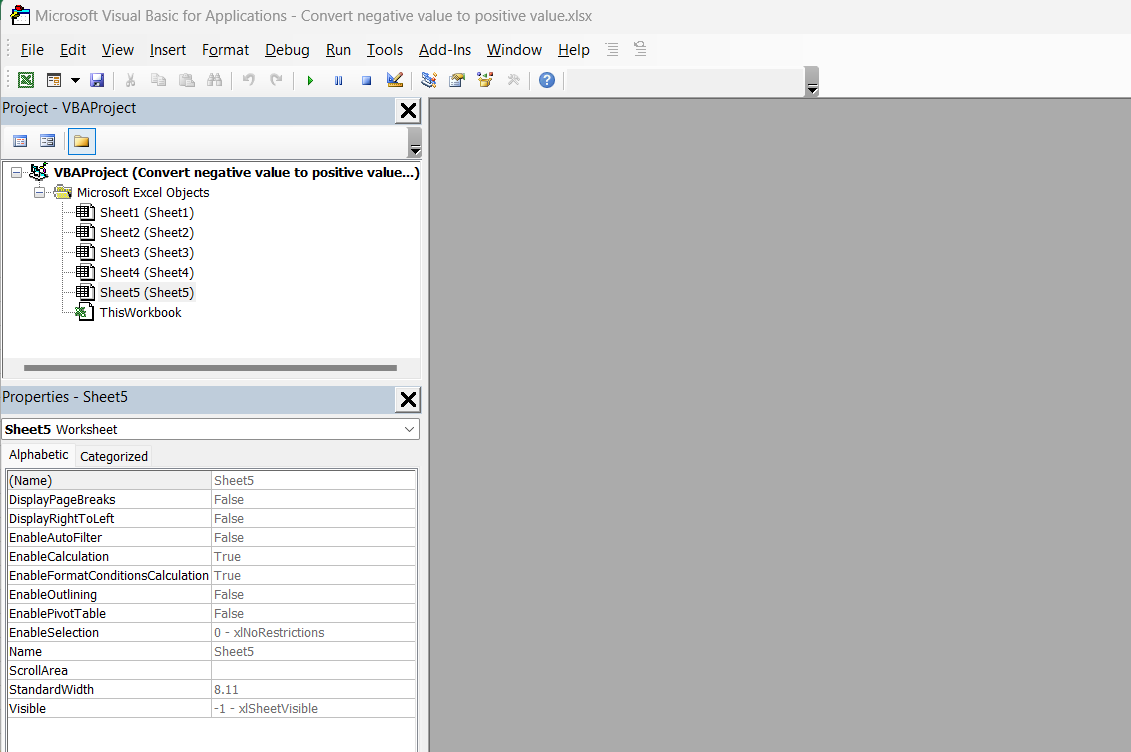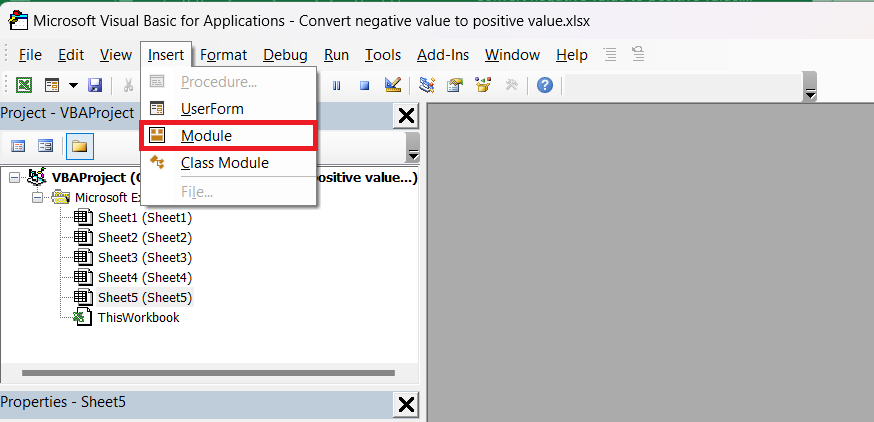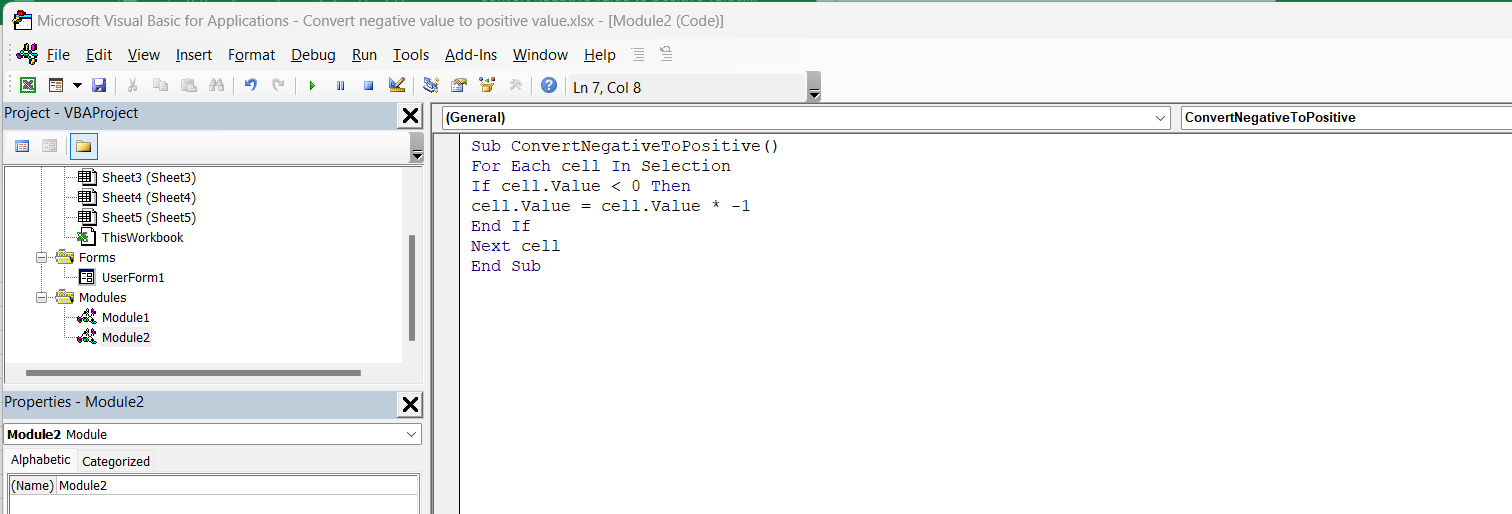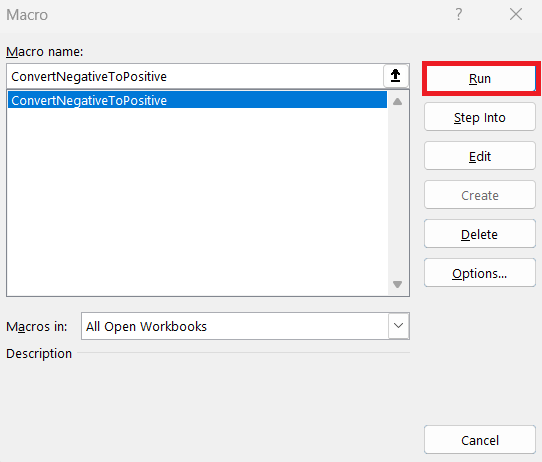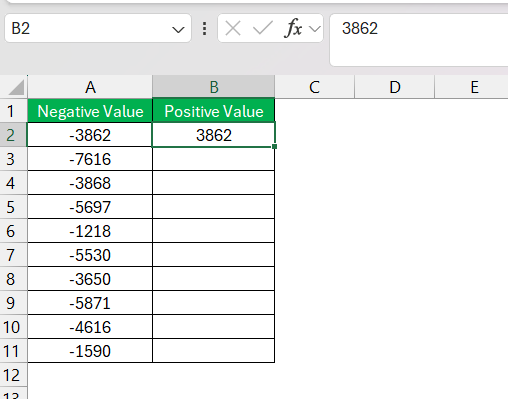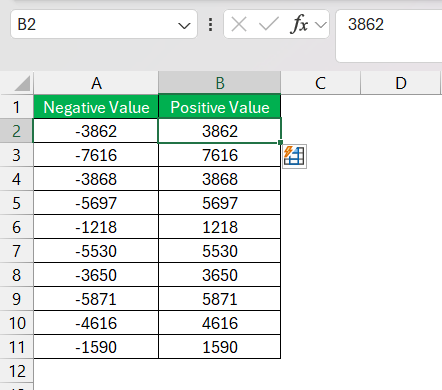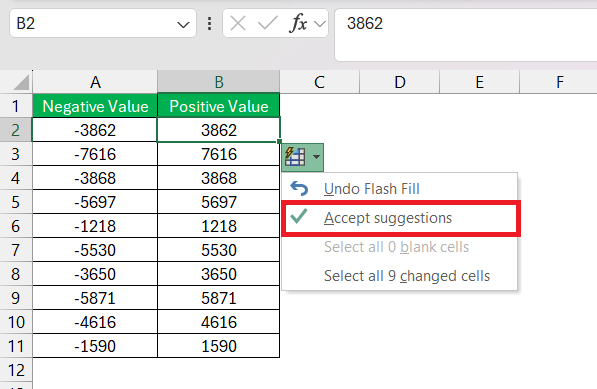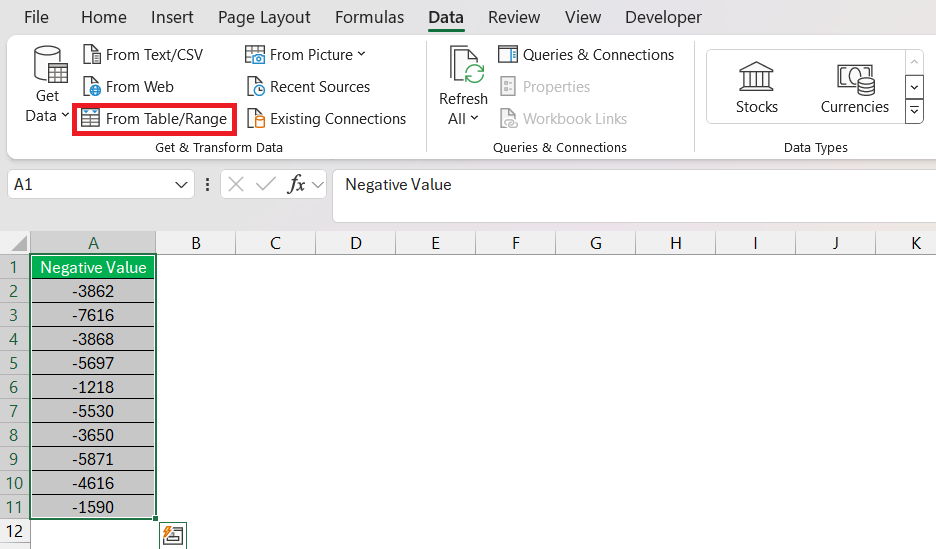In this article, I’m going to walk you through several methods to convert negative value to positive value in Excel. Whether you’re working with financial data, calculations, or just cleaning up a dataset, converting negative numbers to positives can save you time and help you maintain consistency in your analysis.
Excel provides various ways to do this, from simple formulas to more advanced functions, and I’ll cover all the methods so you can choose the best one for your task.
Key Takeaways:
- Multiply by -1 or use the ABS function to convert negative value to positive value.
- Use Paste Special to quickly convert a range of negative numbers.
- The IF function provides control, converting only negative values.
- VBA macros automate bulk conversions, saving time.
- Flash Fill and Power Query offer efficient alternatives for handling large datasets.
Table of Contents
Uncovering the Power of Excel Formulas
The Role of Excel in Numerical Data Management
In my experience, Excel reigns supreme when it comes to numerical data management. It’s more than just spreadsheet software; it’s a powerful tool for analyzing and visualizing data. With its robust functions, we can perform complex calculations, organize large datasets, and even automate repetitive tasks. Whether we’re financial analysts, marketing managers, or entrepreneurs, Excel’s formula features are indispensable for turning raw numbers into actionable insights.
Understanding Negative and Positive Values in Excel
Navigating the realm of numbers in Excel, I’ve come to understand the profound significance of negative and positive values. These values are the cornerstone for representing different types of data such as profits and losses, debits and credits, or increases and decreases in various business scenarios.
In Excel, positive numbers typically denote assets, earnings, or any other form of gain, whereas negative numbers are used to reflect debts, expenses, or losses. It’s vital for us to master the handling of these values to maintain the accuracy of our financial models and data analyses within Excel.
Basic Techniques to Alter Number Signage
Multiply with Minus One to Transform Negatives
When we’re tasked with converting a negative number to a positive, it’s fascinating how a simple mathematical rule from school becomes practically useful. By multiplying any negative value by a negative one (-1), we can instantly transform it to a positive value. This process is straightforward:
STEP 1: Write a formula next to the cell containing the negative value: =A2*-1 (assuming A2 is the cell with the negative number).
STEP 2: The negative number is multiplied by -1, and voilà, it turns positive.
STEP 3: To apply this across a list, we can drag the corner of the cell down to copy the formula for each subsequent cell.
This technique efficiently flips the sign of numbers without altering their absolute magnitude, maintaining data integrity.
Use the ABS Function for Quick Conversion
I’ve always found the ABS function in Excel remarkably handy. It swiftly changes negatives to positives, without any need for multiplication. The ABS function strips away the sign, handing us the absolute value of the number. This is especially useful when dealing with diverse lists containing both positive and negative values:
STEP 1: Begin by entering =ABS(A2) into a cell, where A2 is the cell you’re converting.
STEP 2: Once entered, simply extend the formula to the entire list by dragging the fill handle.
The beauty here is its simplicity—no additional steps are necessary. Positive numbers remain untouched, and the negative ones shed their minus sign, aligning uniformly as positive.
Advanced Excel Functions for Conversion
Implementing Paste Special for Positive Output
I genuinely admire the Paste Special function in Excel; it’s a testament to the software’s flexibility. This feature can do wonders, including converting negative figures to positive ones in bulk, with just a few clicks. Here’s how we can leverage Paste Special:
STEP 1: To begin with, we simply input -1 in an unused cell.
STEP 2: Copy the cell (Ctrl+C), then select the range with the negative numbers.
STEP 3: Right-click on a selected cell, choose ‘Paste Special,’ then select ‘All’ and ‘Multiply’ options.
STEP 4: Confirm with ‘OK’ and like magic, the negative numbers become positive.
The benefit of this approach is that it directly alters data in the original cells, which can be an advantage in certain scenarios. However, we must remember to discard the -1 cell afterward to keep our workspace clean.
Using IF Function
If you’re looking for a method that gives you more control, the IF function allows you to selectively convert negative values while leaving positive numbers unchanged.
In cell B2 (if your data is in A2), type the following formula:
=IF(A2<0, A2*-1, A2)
This formula checks if the value in A2 is less than 0 (i.e., a negative number). If it is, the formula multiplies it by -1, converting it to a positive number. If it’s already positive, it leaves the value unchanged.
Streamlining Conversion with Automation
Utilize VBA Macros for Bulk Conversions
The incorporation of VBA macros in Excel is akin to having a personal assistant dedicated to the menial tasks of data manipulation. I have utilized VBA macros to automate the conversion of negative values to positive across extensive datasets, saving an immense amount of time and potential human error. To build a VBA macro for this purpose:
STEP 1: Press Alt + F11 to open the VBA editor.
STEP 2: Choose ‘Insert’ followed by ‘Module’ to create a new module.
STEP 3: Write the macro code that can iterate over a range and convert negative value to positive value. An example snippet would be:
Sub ConvertNegativeToPositive()
For Each cell In Selection
If cell.Value &lt; 0 Then
cell.Value = cell.Value * -1
End If
Next cell
End Sub
STEP 4: Run the macro.
All negative values will be converted to positive values.
Achieve One-Click Conversion Using Flash Fill
The Flash Fill feature in Excel is like a breeze that swiftly takes care of repetitive tasks that would otherwise be monotonous. For converting negative values to positive, it works like a charm. With one example, Flash Fill grasps the pattern and replicates it across the selected range:
STEP 1: First, I enter the positive number corresponding to the negative one in cell A2 into cell B2 (we’re considering A-column contains the negative values).
STEP 2: On hitting Ctrl + E, Flash Fill kicks in from cell B3 onward, converting the range of negative numbers to positive in a split second.
STEP 3: I then click on the small icon on the right side of column B, select “Accept Suggestions,” and it’s done. All negatives are now positives.
Flash Fill thus elegantly eliminates the need for complex formulas, giving us a quick and practical solution for certain data conversion challenges.
Power Query
If you’re comfortable using Power Query, you can also convert negative values to positive ones there. Power Query allows for flexible data manipulation, especially useful for large datasets.
STEP 1: Select your data range and go to Data > From Table/Range.
STEP 2: In Power Query, click on the column with negative numbers. Go to Transform and select Standard > Multiply.
STEP 3: Type -1 and click OK.
STEP 4: After making the transformation, click Close & Load to load the data back into Excel.
The negative values will be converted to positive values.
Frequently Asked Questions (FAQ)
How to convert negative to positive in Excel using a formula?
To convert negative numbers to positive in Excel, use the ABS function. Simply type =ABS(A1) in a cell, replacing A1 with the reference to the cell containing the negative number. When you hit Enter, the cell will display the positive value of the number.
Can Excel convert all negative numbers in a column with one formula?
Yes, Excel can convert all negative numbers in a column with one formula. Enter =ABS(A1) next to your first number, and then drag the fill handle down to apply this to the entire column. This will yield positive values for all negative numbers in the column.
Are there any precautions to take before converting number signs?
Before converting number signs in Excel, ensure numbers are formatted correctly as numerical values, not text. Also, create a data backup to prevent data loss in case of errors. Verify the correct input of negative values to avoid calculation issues.
What formula can I use to only display negative numbers as positive?
To display negative numbers as positive without changing the actual value, use a custom number format. Select the cells, right-click, choose ‘Format Cells,’ then ‘Custom,’ and enter the format 0;0;0;@. This makes negatives appear positive in the cell.
Which formula is converting negative value to positive value?
The formula =ABS(A1) in Excel converts negative values to positive values, where A1 is the cell containing the negative number. ABS stands for absolute value, which always returns a non-negative value.
John Michaloudis is a former accountant and finance analyst at General Electric, a Microsoft MVP since 2020, an Amazon #1 bestselling author of 4 Microsoft Excel books and teacher of Microsoft Excel & Office over at his flagship MyExcelOnline Academy Online Course.

